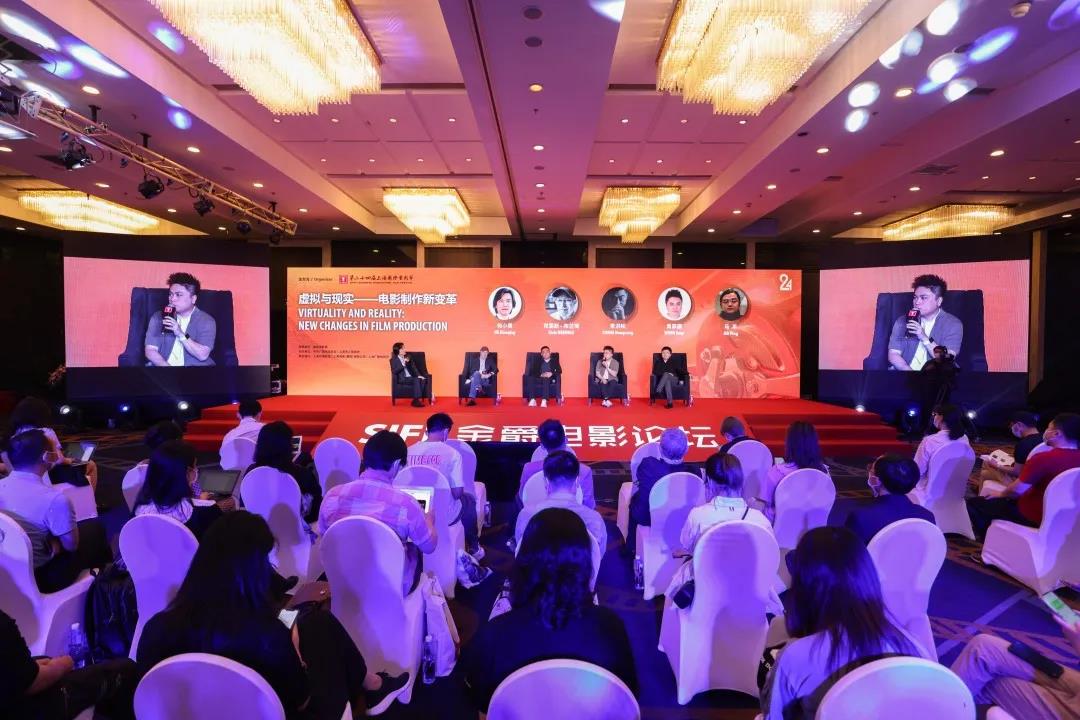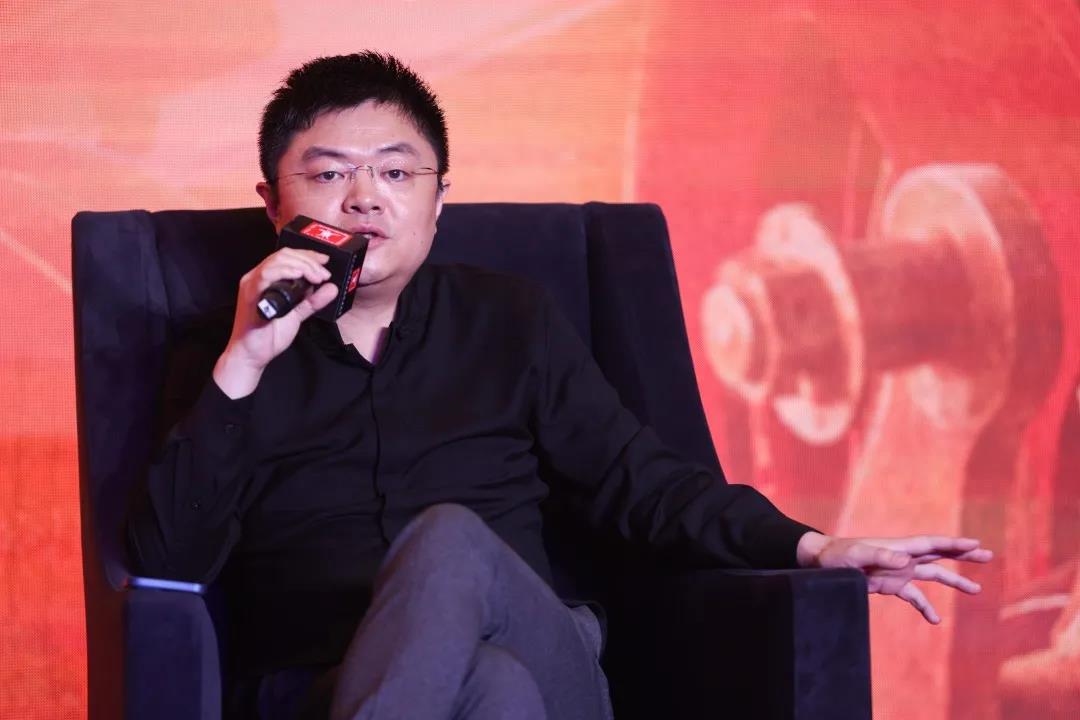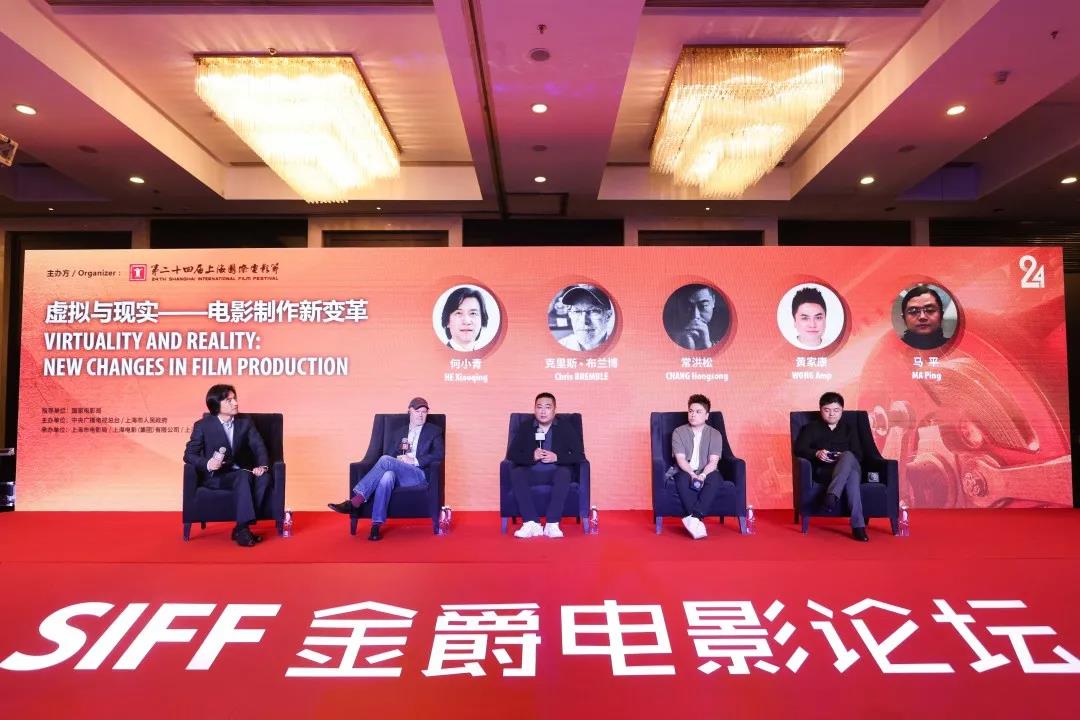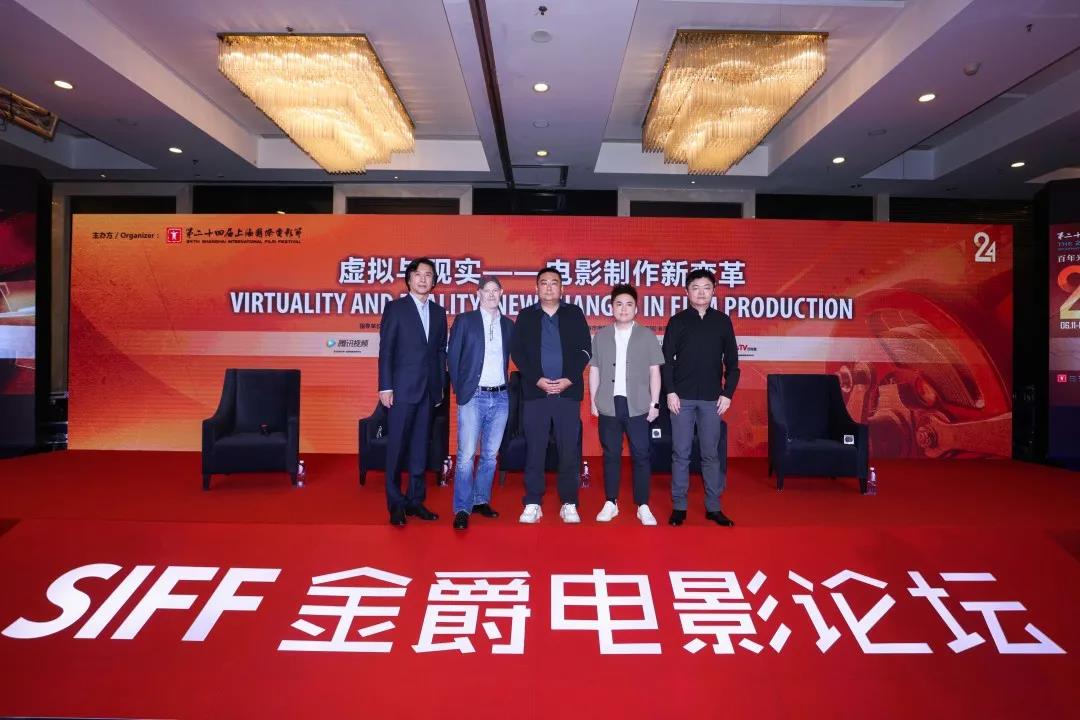SIFFORUM | "Virtual Production" Becomes Trendsetting, Creative Concept Needs Urgent Update
In front of a green curtain, the actor imagined that he was in space and staged a fight scene, which was a scene from previous special effects blockbusters. But in the future, actors will no longer have to face the green curtain, and the crew will no longer have to wait for long post-production. This is not a miracle, but the increasingly popular "virtual production" in the film and television industry. Nowadays, more and more movies or drama series have changed the traditional film and television production mode because of the use of virtual LED screen shooting. This morning, the SIFForum of the 24th Shanghai International Film Festival conducted exchanges and discussions on the topic of "Virtuality and Reality-New Changes in Film Production". The guests at the meeting believed that although the new technology saves shooting costs and improves the efficiency of the crew, yet at the same time, a new challenge is posed to the creative team, "The director must be clear about his creativity before the start, and early creative communication has become very important."

Early communication challenges of "virtual production" cannot be neglected
The story of "The Mandalorian" that triggered industry changes takes place on an alien planet. Unlike traditional green curtain shooting, the production team of "The Mandalorian" uses LED screens to shoot, combining the path tracked by the camera and the background image rendered in real time. Real characters and fictional scenes are completely integrated, you can see what you take, and what you see is what you get. Since then, "virtual production" has made special effects blockbusters no longer dependent on lengthy post-production.
Base Media has participated in the special effects production of "The Mandalorian". Founder and CEO Chris Bramble believes that such high-tech technologies have saved a lot of costs for the entire production company. It is also very beneficial for the director. However, there are still many challenges to the industry. “It requires a complex process of pre-production. Filmmakers should change their habits and may be fully prepared three to four months in advance.”

The top domestic special effects company Tiangong Yicai has contributed to domestic blockbusters such as "The Ghouls" and "The YinYang Master". The founder and chairman Chang Hongsong is also looking forward to the arrival of the era of "virtual production", and he also said that the promotion and use of new technologies will pose a huge challenge to the creative team, "because it forces the director to make all the ideas clear before starting. However, our domestic directors also like to set the general direction and try different shooting schemes. In the later stage, the later stage companies are urged to do it slowly.” In this regard, Chang Hongsong believes that the changes brought about by new technologies will also promote the replacement of talents in the industry. “I believe there will be more creative and imaginative talents in the future. Young directors have emerged because they are fully able to accept new processes and new technologies. I believe that this day will definitely come. This is an unstoppable trend."

This summer, the animated film "White Snake 2" will meet the audience. This is the latest masterpiece of Light Chaser Animation after "White Snake" and "New Gods: Nezha Reborn". In fact, "virtual production" has already been applied to the field of animation. Huang Jiakang, the director of Light Chaser Animation, also believes that the early creative communication is "critical". "Our entire Light Chaser Animation team is about 250 people, and the production team is less than 10, that is, 10 colleagues have to work with colleagues in nearly 20 departments, and it takes almost 3 years to complete the production from the early stage, which requires strong communication and collaboration skills."

"Virtual production" becomes popular because of "The Mandalorian". In fact, as early as James Cameron was filming "Avatar", related concepts were put forward. Ma Ping, Deputy General Manager of State Production Base of China Film Group, said, “Virtual production is equivalent to introducing the concept of LED background wall on the basis of traditional virtual shooting. Before shooting, there have been applications for game engines, including real-time rendering, real-time synthesis, and real-time lighting, etc. Now the virtual production becomes hot because of "The Mandalorian". It is because the LED has become more touchable and more intuitive." Ma Ping said that compared with the traditional shooting mode, virtual production at least saves 50-70% of the cost, "but the laws of craftsmanship, production, and cost behind it require people in this industry to study and explore."
Ma Ping, Deputy General Manager of State Production Base of China Film Group, Deputy Director of High-tech Committee, China Society of Motion Picture and Television Engineers (CSMPTE), member of the CSWA Science and Film Integration Professional Committee under China Association for Science and Technology (CAST), and member of the Council of China Society of Cinematographers

Special effects breakthrough still needs creativity
More than ten years ago, the post-production special effects of Chinese films basically relied on the production of overseas special effects companies. When director Feng Xiaogang filmed "Assembly" in 2007, all special effects were made by the Korean special effects team, while Wu Yusen's "1949" invited the "Digital Domain" to undertake special effects production. But with the in-depth development of China's film industry, Chinese special effects companies already could make any shots five or six years ago. For example, in "The Wandering Earth", 75% of the special effects were made by the Chinese team.
"For example, the fluid solution of the collapsed water, the cloth solution, the biological role with hair, etc., were very difficult in the past, but now at Tiangong Yicai, one R&D team is focused on reducing costs and improving efficiency, and the other R&D team is focused on the intelligent AI technology to coordinate the production of graphics and image science in the later stage.” Chang Hongsong emphasized, “In the future, based on the role generated by the algorithm itself, it may be put in the movie to participate in the performance. In the future, you should have confidence in the Chinese special effects industry.”

But no matter how the technology advances and innovates, the first priority is still to serve the story. "We can make an avatar in one minute, but we have to think more about the time and cost of story creation." Chris Bramble pointed out, "For us, technical costs and production costs are not a problem. What matters is if the story is creative, so as to attract the audience." Huang Jiakang showed the scene of "White Snake 2": Xiaoqing no longer wears traditional costumes, but reveals the beauty of shoulders and collarbone, "Because of technological progress, we have greater freedom in creation, but technology should also help tell stories."
It is said that one may draw a tiger in so far as its skin,but it is hard to draw its bones. Special effects also face this problem. In Ma Ping’s view, the core of technology is how to release all creativity, “how to apply the technical core particularly well to the scenes and plots, this is something that Chinese movies still lack, and behind it is technology and creation. A deep law of how to integrate organically requires Chinese filmmakers to think about."
Organic combination of advanced technology and traditional culture
In recent years, blockbuster films such as "Monster Hunt", "White Snake ", and "Nezha " have become popular. A group of films with Chinese aesthetic characteristics have injected new cultural connotations into Chinese films under the rendering of special effects. How to use technology to show the freehand features of Chinese aesthetics and how to combine advanced technology with traditional art have become the focus in the industry.
Base Media has participated in the production of domestic films such as "Monster Hunt" and "The Great Wall". Its founder, Chris Bramble, regards China as his second hometown. His answer is that he hopes to present Chinese traditional culture to the world. "Many Americans think of martial arts when they think of Chinese movies. But my goal is to tell traditional Chinese stories to people who are familiar with them. I think the form of animation can better present Chinese cultural stories."

From "Little Door Gods" to "White Snake", and then to "White Snake 2", Huang Jiakang of the Light Chaser Animation has been thinking about how to express traditional cultural content through technology. "For example, when we were working on "White Snake 2," we considered making the flooding golden mountain. In the past, the effects and imagination of film and television works may be very limited. How to express the effect of the golden mountain with Chinese characteristics in 2021. It is difficult to produce. We didn’t complete the effect of the flooding golden mountain until a few days before the completion of the film. "It’s even more difficult to express the concept of "obsession" with traditional Chinese characteristics. "This thing is quite Chinese, and the challenge the film faces is how to let the audience have a visual concept. So, every day I think about how to use technology to realize the traditional images, stories, and concepts.” Huang Jiakang also has to worry about the feelings of young audiences, “Don’t let them think that this thing is very old. Its expression still has to be related to modern aesthetics, so the method of expression in this film should be acceptable to young people."
Speaking of the combination of technology and traditional culture, Ma Ping specifically mentioned the classic animations of Shanghai Animation Film Studio, including "The Monkey King", ink animation "Feelings of Mountains and Waters" and "Baby Tadpoles Look for Their Mother". "These works have reached a particularly high level. They use animation film technology in the expression of traditional culture, with the traditional aesthetic logic running through. "At present, China’s special effects technology has completely caught up with the Western world, and some works combine the most advanced technology with traditional culture. "For example, the Cantonese opera film "The Legend of the White Snake: Love" did not use traditional aesthetics and traditional stage operas in expression, but used a lot of special effects. As a result, after the film was released, it attracted a large number of young people into the cinema."







